These Reptiles and Amphibians Are the Most: World’s Top 7 “Herps”
For immediate release ‐ March 11, 2022
Contact: Micah Beasley, 919.707.9970. Images available upon request
Hoppy Herp Days! Instead of our usual Reptile and Amphibian Day, we’re spreading the love for all things slithery, scaly, and slimy by having a MONTH of various “herp”-themed events – including herp hikes, virtual talks, workshops and more! We’re also awarding superlatives to seven of the most remarkable reptiles and amphibians.
Reptile & Amphibian Month Program List
By R Babb, AmeriCorps Public Science Event Specialist
1. Longest | 2. Coolest | 3. Heaviest | 4. Fastest | 5. Hottest | 6. Smallest | 7. The Most
1. Longest
Do you know the loooooooongest reptile?
Here’s a hint: it can usually be found slithering across the rainforests, grasslands and seas of Southeast Asia, in pet shops across the world, or even in a science museum near you!
According to Guinness World Records, the longest reptile ever recorded was a Reticulated Python (Python reticulatus) specimen from Indonesia in 1912 that measured 32 ft, 9.5 in long (~10 meters)! That’s more than half the length of a bowling lane! Most Reticulated Pythons don’t become record-setting giants, but given the right environment with enough time (and food), they can grow to be one of the largest reptile species in the world!

Lavender albino reticulated python at Reptile & Amphibian Day 2016. Photo: Karen Swain/NCMNS.
2. Coolest
The coolest herp award goes to the Siberian Salamander, the only salamander species to live in the Arctic Circle!
While many amphibians overwinter by hiding underground, underwater or under thick vegetation, Salamandrella keyserlingii takes it to another level. Being covered by soil, water, or plant matter provides insulation from the cold, but it doesn’t stop the water in their bodies from freezing. Many frogs and other salamanders can survive frozen for months without harm, however, scientists found Siberian Salamanders can hibernate in the permafrost for years like a popsicle! They produce a special chemical called glycerol to prevent ice crystals from damaging their bodies’ cells during prolonged sub-freezing conditions. Even at temperatures as low as -67 °F (-55 °C), these amazing animals will thaw and walk away come spring. How cool!
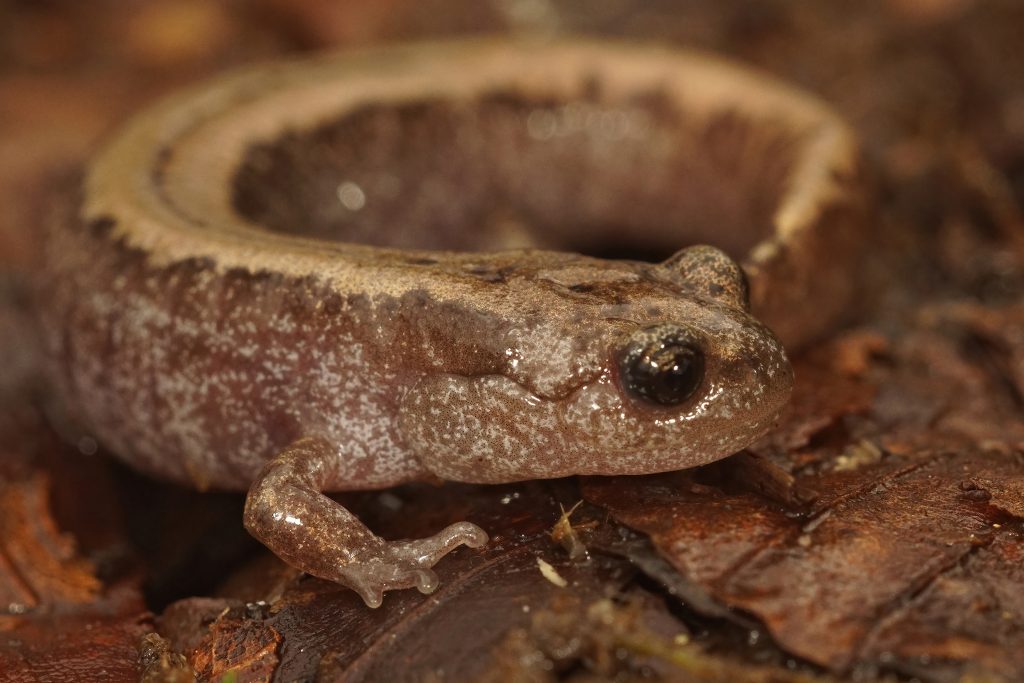
The Siberian Salamander, which is able to survive extreme winter freezes.
3. Heaviest
The world’s most massive living reptile award goes to… the Saltwater Crocodile! Crikey!
Lolong, a “saltie” now preserved at the National Museum of Natural History, Manila, has the Guinness World Record for largest crocodile in captivity. Even though he weighed 2,370 lbs (1,075 kg), he’s likely not the heftiest croc out there. Crocodilians’ weight increases sharply as length increases, but eventually, their increase in weight outstrips their growth in length. The wild nature of this species makes it hard to capture and measure, but regular sightings of 20-foot-long and longer Saltwater Crocodiles means there are plenty of supersized lizards roaming the swamps, river deltas and seas. If you’re ever sailing the coasts of Australia or Southeast Asia, keep your eyes open for these beauties!
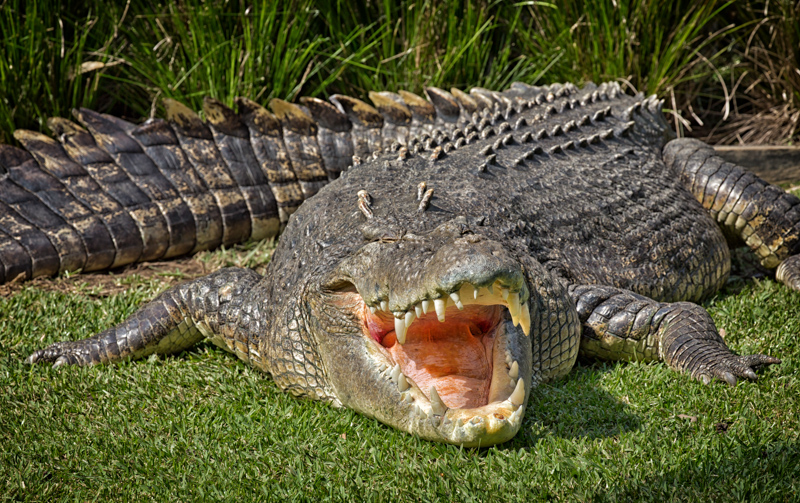
Huge Saltwater Crocodile shows its teeth.
4. Fastest
Who would win a foot race: the fastest man in the world or a lizard?
Usain Bolt broke world records when he ran 100 meters in 9.58 seconds, sprinting across the finish line at 23.4 mph (37.6 km/h), but the Perentie (Varanus giganteus) of Australia, one of the largest and fastest living lizards in the world, can run up to 25 mph (40.23 km/h)! The Perentie can chase down prey as large as kangaroos, maintaining top speed for over half a mile (more than 800 meters). With incredible neck muscles that act as air bellows, powerful hind legs, and sharp claws for traction — plus a recently discovered adaption of anticoagulant venom — they are voracious predators. Small mammals, reptiles, insects and birds make up the bulk of the menu of this super speedy lizard!
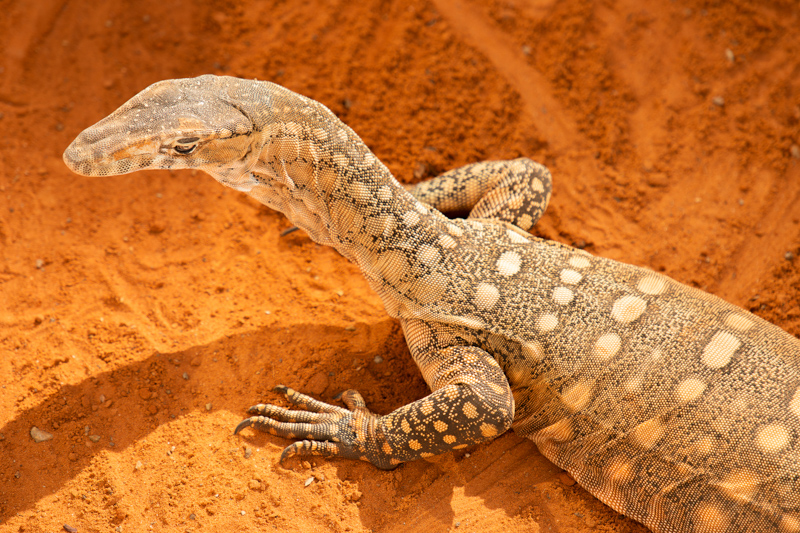
Perentie, one of the largest and fastest living reptiles.
5. Hottest
The Desert Iguana sure can handle the heat!
Native to the desert scrublands of the southwestern US and northwestern Mexico, Dipsosaurus dorsalis can remain active at up to 115° F (46° C), well past the threshold of other lizards. Like other ectotherms (cold-blooded animals), their body temperature depends on their environment. Desert Iguanas change color based on their environment, darkest in the mornings to soak up the sun’s rays while basking on rocks and sandy streambeds, then gradually fading to white in the early afternoon to reflect light and prevent overheating. On the most sweltering of days, they can be found lying in the shade of creosote bushes or deep in sandy burrows. Even underground, they still need the heat – their eggs only hatch between 82-100° F (28-38° C), officially making them one of the hottest lizards around!
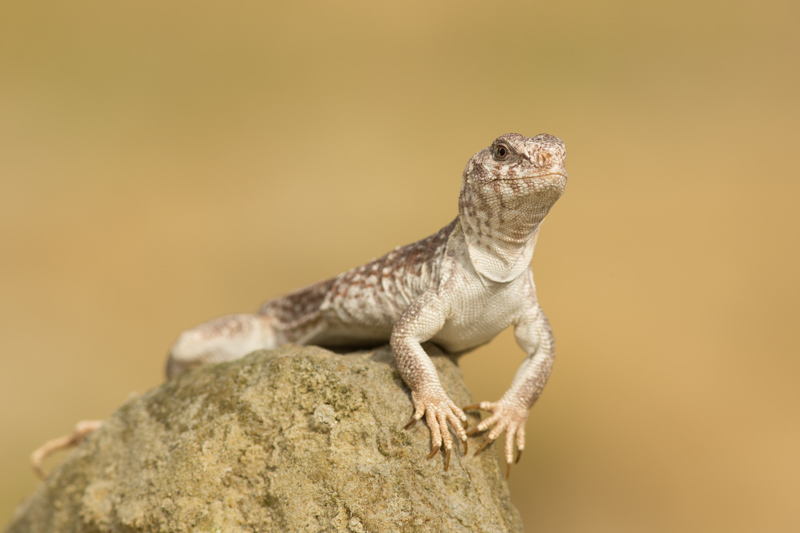
Desert Iguanas are one of the most common lizards of the Sonoran and Mojave deserts of the southwestern United States and northwestern Mexico.
6. Smallest
Did you know your fingernail is bigger than the world’s smallest known vertebrate?
Paedophryne amauensis was first discovered in 2009 by scientists studying the biodiversity of Papua New Guinea. These tiny frogs camouflage themselves on the low-lying rainforest floor, blending in so well that they were only spotted after putting handfuls of leaf litter in a bag and seeing them hop around.
Another fascinating fact about this super small species: unlike many other frogs, P. amauensis lives entirely on land and does not have a tadpole stage – they hatch as mini versions of the adult stage. Adults measure only 0.30 in (7.7mm) so the juvenile frogs, called “hoppers,” don’t have much growing to do.
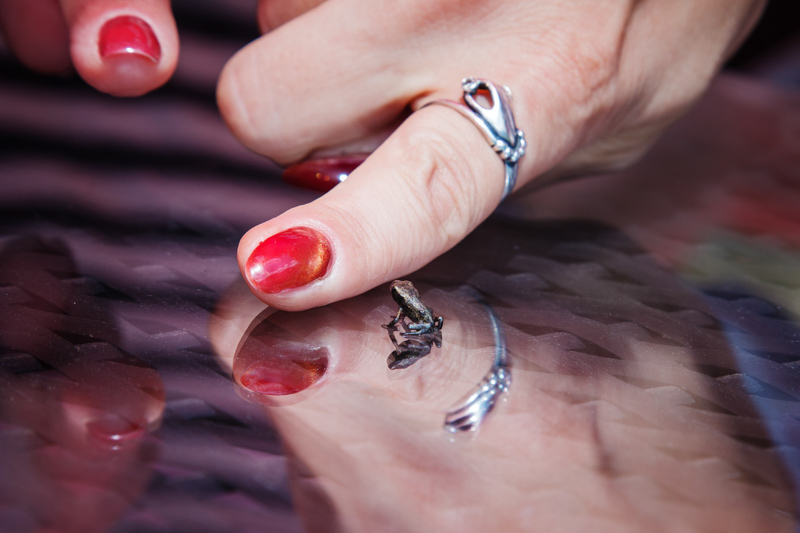
The smallest frog is smaller than a human fingernail.
7. Salamander Capital of the World
There’s a lot to love about North Carolina, but one especially awesome fact is that we are arguably the “Salamander Capital of the World!” The state is home to about 65 species of salamanders (commonly called “spring lizards” in the Southern Appalachians), as well as 30 species of frogs and toads. Check out Amphibians and Reptiles of North Carolina’s salamanders (http://herpsofnc.org/salamanders/) and frogs and toads (http://herpsofnc.org/frogs-and-toads/) pages to learn more about the incredible diversity of amphibians here!

A yellow-spotted salamander is one of many salamander species native to the western half of North Carolina. Photo: Mike Dunn.
For more information about our upcoming activities, conservation news and ground-breaking research, follow @NaturalSciences onInstagram,TwitterandFacebook.Join the conversation with #visitNCMNS.

